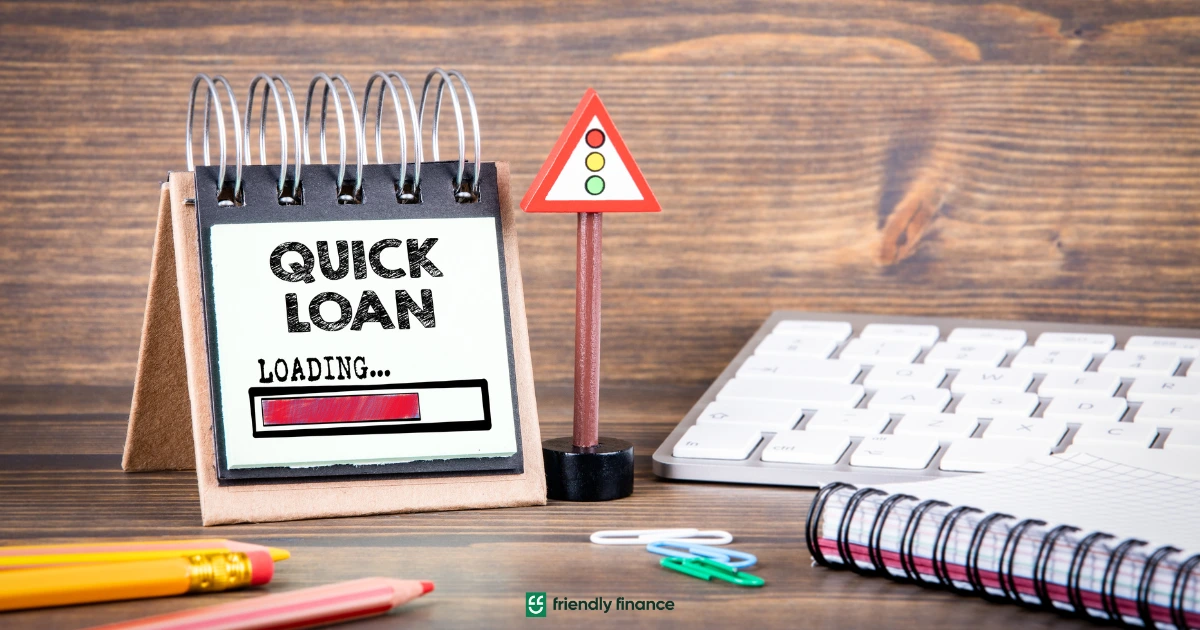The Complete Guide to Small Personal Loans: Borrowing $300 to $2,000 Smartly
Key Takeaways
Small personal loans ($300–$2,000) are ideal for emergencies or short-term expenses.
Lenders charge flat fees rather than interest, with repayments tailored to your income cycle.
Always compare total repayable amounts, fees, and loan flexibility—not just advertised rates.
When you're hit with an unexpected bill or trying to cover short-term costs, a small personal loan can be a practical solution—if you know what to look for. These bite-sized loans are easier to apply for than you might think, but they still come with their share of fine print, fees, and varying interest rates.
In this guide, we’ll walk you through everything: how these loans work, where to get them, how your credit score affects your interest rate, and how to avoid overpaying in fees and charges.
What Are Small Personal Loans?
Small personal loans are unsecured or secured loans that let you borrow between $300 and $2,000. They’re typically used to cover emergency expenses, short-term cash flow gaps, or one-off purchases like medical bills, car repairs, or overdue utilities.
You repay them in instalments—weekly, fortnightly or monthly—with added interest and fees. Depending on your lender, these loans may run for as little as 3 months or up to 2 years.
Unlike credit cards, personal loans come with set loan repayments, a clear loan amount, and usually a fixed interest rate or variable interest rate, which makes budgeting more predictable.
Where Can I Get a Small Personal Loan
Looking for fast, flexible, small personal loans? Here's a side-by-side comparison of trusted online lenders offering amounts from $300 to $2,000.
Online Lender | Loan Terms | Interest / Comparison Rate | Loan Repayments | Loan Fees | Loan Features |
CashFaster | • $300–$2,000 (SACC) • ~4–12 weeks term | • Flat fees •Comparison rate up to ~199% (upper SACC cap) | • Fixed instalments across the term | • Up to 20% establishment fee • 4% monthly fee | • Fast approval •Transparent caps apply under the regulation |
Fair Go Finance | • $500–$2,000 (small loan tier) • 3–12 months | • Fixed rate tailored per borrower • Tiered APR | • Customer-personalised weekly/fortnightly/monthly options | •Establishment fee (tiered) • No early exit fee | • Soft credit check • Instant eligibility check • Helps improve credit score |
OK! Cash Loans | • $300–$5,000 • Typical term 3–12 months | • Fixed APR or fee schedule • First-time cap around $1K | • Flexible repayment options set per borrower | •Transparent flat fees determined by amount and term | • Early payoff allowed • Ideal for repeat short‑term needs |
Nimble | • $500–$2,000 initial tier; up to $5,000 for repeat borrowers • Term 2–24 months | • APR up to ~47% for MACC and SACC loans | • Weekly/fortnightly/monthly repayment options | • ~$400 establishment fee •Sometimes monthly fees | • Available 24/7 • Instant funding (~60 min) • Accepts lower credit scores |
Where Can I Use Small Personal Loans?

Small personal loans, typically ranging from $300 to $2,000, are best suited for short-term, essential expenses when you need quick access to cash without relying on credit cards or Buy Now Pay Later services. These loans are often unsecured and can be used for a variety of practical purposes, including:
Emergency Medical Bills – Cover out-of-pocket costs for GP visits, dental care, or prescriptions.
Car Repairs – Pay for urgent vehicle servicing, parts replacement, or registration fees.
Rent and Bond Assistance – Bridge the gap for rental bond payments or cover overdue rent to avoid eviction.
White Goods and Appliances – Repair, purchase, or replace essential household items like a refrigerator, washing machine, or dryer.
Utility or Phone Bill Arrears – Prevent disconnection by settling overdue electricity, water, or mobile bills.
Everyday Living Expenses – Manage groceries, transport costs, or childcare during tight financial periods.
Unexpected Travel – Book urgent flights or accommodation, often for family emergencies.
Technology Replacement – Replace essential items like phones, laptops, or appliances in the event of theft or breakdown.
What Are the Features of Small Personal Loans?
Fixed vs Variable Rate Loans
Most small personal loans operate on a fixed fee model rather than traditional interest-based pricing, but when interest is charged, it generally falls under fixed-rate structures.
Fixed Interest Rate Loans
The majority of small loans charge a set cost over the life of the loan, regardless of how quickly you repay. That’s why fixed-rate or flat-fee structures dominate this category.
Many of these products are defined under Australian law as Small Amount Credit Contracts (SACC). Under this legislation, lenders like CashFaster and Nimble use a regulated flat-fee pricing model instead of traditional interest. The costs are capped by law at a maximum of 20% of the loan amount as an establishment fee and 4% of the original loan amount as a monthly fee. This structure makes repayments predictable.
Repayments are predictable and often structured around your pay cycle (weekly or fortnightly), making budgeting easier.
Early repayment is usually encouraged, and most lenders won’t penalise you for clearing the loan early, unlike some fixed-rate medium loans.
Variable Interest Rate Loans
Variable interest rate loans are rare in small loans due to regulatory caps that make variable pricing impractical at this level.
Where applied (in niche MACC products up to $5,000), variable interest rates may fluctuate, but lenders often opt for clarity over complexity.
In practice, small loans are more fee-driven than rate-driven, which protects consumers from ambiguous cost escalation but can lead to high effective APRs.
Example: A $1,000 loan from a SACC provider may carry a $200 establishment fee and $40 per month (4%) for a 3-month term, ending in a total repayment of $1,320. No interest rate is technically advertised, but the comparison rate could exceed 100% p.a.
Secured vs Unsecured Loans
Almost all small personal loans are unsecured, meaning there's no collateral backing the loan. Here's what that means for you:
Unsecured Loans
Approval is based on your income, bank statements, credit file, and sometimes your Centrelink history, not your assets.
Lenders such as Fair Go Finance specialise in fast-turnaround unsecured loans in this bracket.
The trade-off for convenience is cost: lenders offset the risk of non-payment with higher fees and charges.
These loans are perfect for renters, students, part-time workers, or gig economy earners who may not have assets to secure a loan against.
Secured Loans
Not commonly offered for small loans, as the administrative overhead often outweighs the loan value.
Some lenders may request additional proof of income or more detailed bank transaction history, but physical collateral is almost never required for loans under $2,000.
Example: If you need $700 for urgent car repairs and apply through Nimble, you’ll likely be offered an unsecured loan with fixed fortnightly repayments. You won’t need to pledge the vehicle you’re repairing—it’s assessed on income and affordability alone.
Fees and Charges
Look out for:
Establishment fees – Capped at 20% of the loan amount (e.g. $200 on a $1,000 loan)
Monthly service fees – Limited to 4% of the original loan amount (e.g. $40/month on a $1,000 loan)
Missed payment fees – Some lenders, like MyPayNow, skip these; others may charge dishonour or late fees
High effective APRs – While technically “interest-free,” combined flat fees can push the comparison rate above 100% p.a.
Repeat borrower incentives – Some lenders like Fundo reduce future fees for consistent repayment history
How to Compare SACC Loans

Don’t just chase the lowest interest rate. You should also compare:
Total loan amount repayable
Monthly repayments
Upfront and ongoing fees and charges
Repayment frequency (weekly, fortnightly, monthly)
Flexibility on extra repayments or early exit
Whether the loan is secured or unsecured
What happens if you miss a repayment
Use tools like MoneySmart’s personal loan calculator to estimate the true cost of a loan, or jump on comparison sites like Finder, Canstar, or InfoChoice.
How Credit Score Affects Your Loan
Lenders assess your credit score, credit report, and overall credit history before deciding what interest rate to offer you—or if they’ll offer you anything at all. The higher your score, the more likely you are to access a lower rate and fewer fees.
Here’s how it generally plays out:
A credit score of 700+ will typically qualify you for the lowest interest rates, which might start around 6–7% p.a..
For lower scores, you may still get access to a loan, but with interest rates (APRs) closer to 20–48% and potentially more fees.
For scores below 500, you might be looking at specialised lenders or small loan products that are more fee-driven than rate-driven. Lenders in this space may focus more on your current income and cash flow from bank statements rather than just your credit file to assess your application.
Final Thoughts
A small personal loan can be a lifeline—or a trap—depending on how well you understand the terms. Your financial situation, credit score, and knowledge of the fees and charges will determine whether you get a fair deal or end up paying way more than expected.
Always check the comparison rate, review the application process, and ask questions about penalties, flexibility, and how your repayments are structured. And if you’re not sure? Consider starting with a No Interest Loan before locking yourself into something longer-term.
If you are looking for a small personal loan solution, apply here at Friendly Finance.




